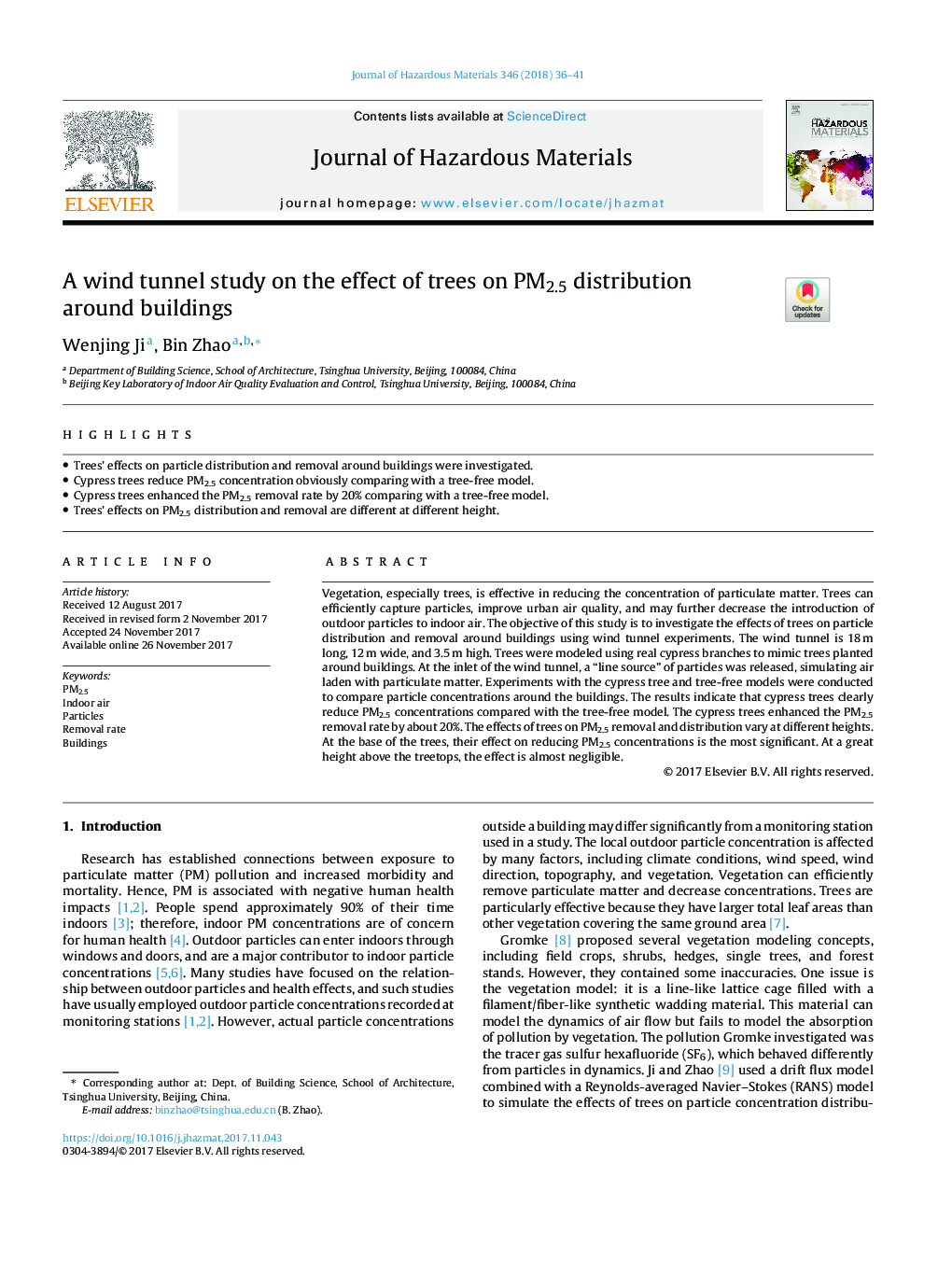| Article ID | Journal | Published Year | Pages | File Type |
|---|---|---|---|---|
| 6969205 | Journal of Hazardous Materials | 2018 | 6 Pages |
Abstract
Vegetation, especially trees, is effective in reducing the concentration of particulate matter. Trees can efficiently capture particles, improve urban air quality, and may further decrease the introduction of outdoor particles to indoor air. The objective of this study is to investigate the effects of trees on particle distribution and removal around buildings using wind tunnel experiments. The wind tunnel is 18Â m long, 12Â m wide, and 3.5Â m high. Trees were modeled using real cypress branches to mimic trees planted around buildings. At the inlet of the wind tunnel, a “line source” of particles was released, simulating air laden with particulate matter. Experiments with the cypress tree and tree-free models were conducted to compare particle concentrations around the buildings. The results indicate that cypress trees clearly reduce PM2.5 concentrations compared with the tree-free model. The cypress trees enhanced the PM2.5 removal rate by about 20%. The effects of trees on PM2.5 removal and distribution vary at different heights. At the base of the trees, their effect on reducing PM2.5 concentrations is the most significant. At a great height above the treetops, the effect is almost negligible.
Related Topics
Physical Sciences and Engineering
Chemical Engineering
Chemical Health and Safety
Authors
Wenjing Ji, Bin Zhao,
